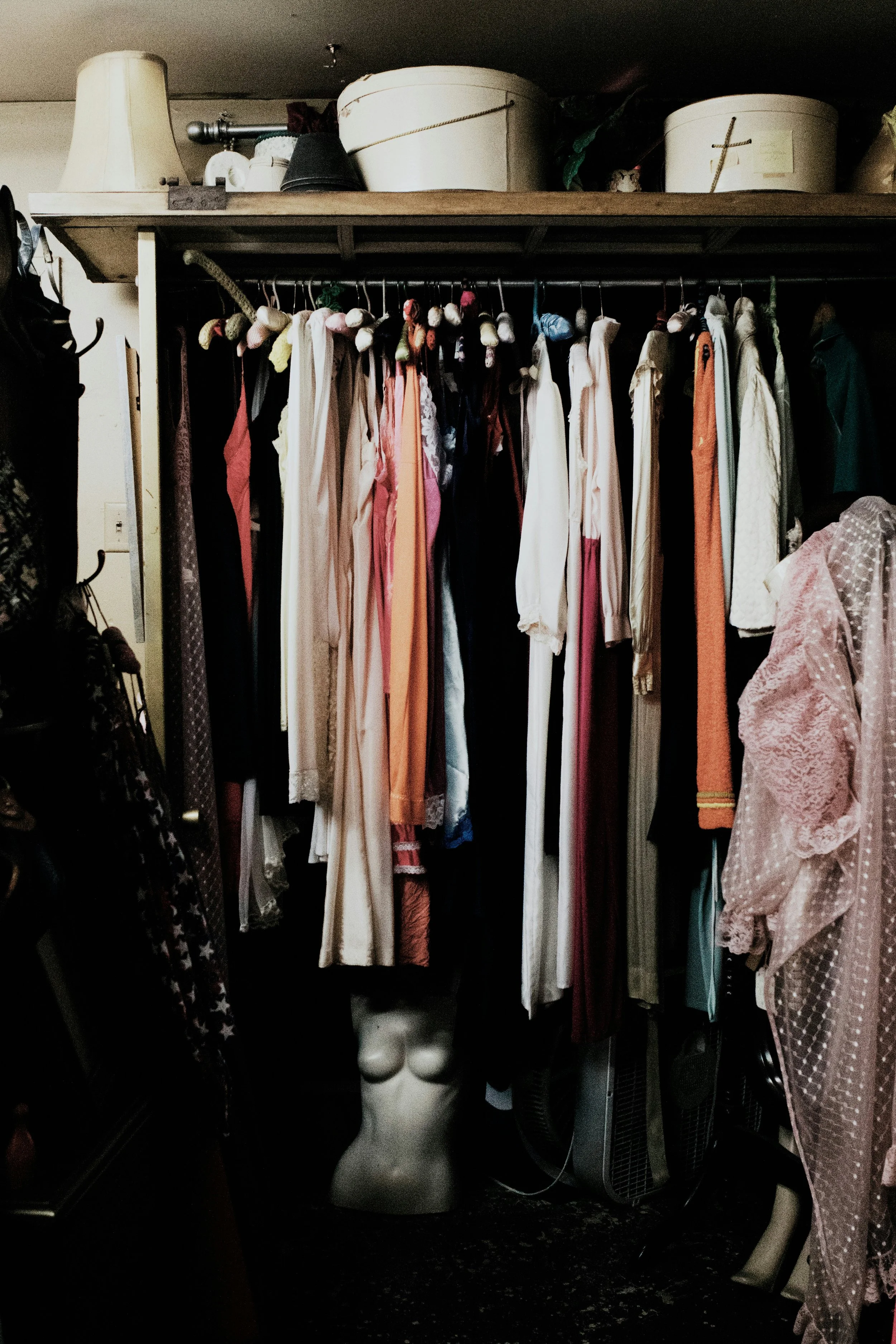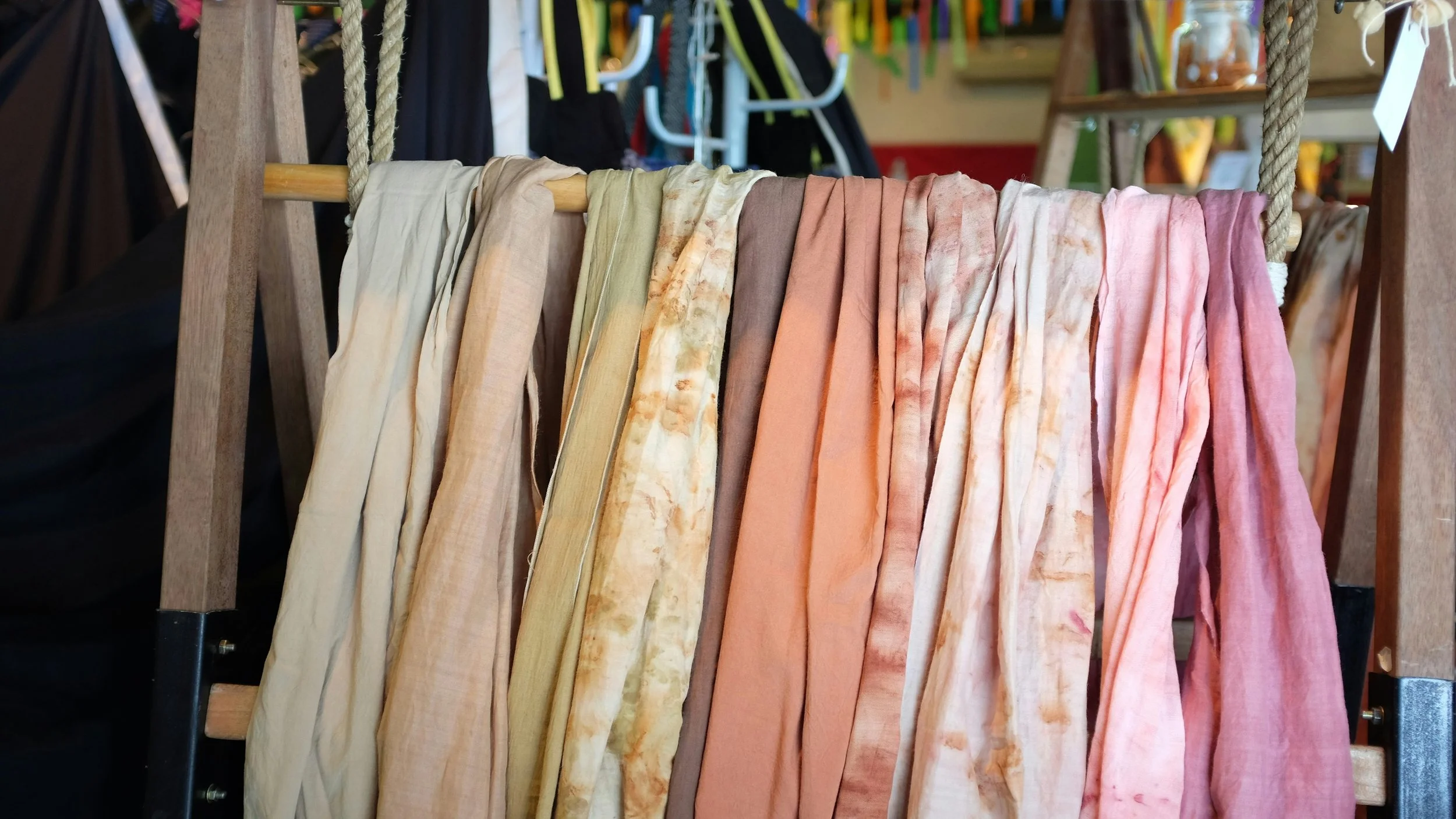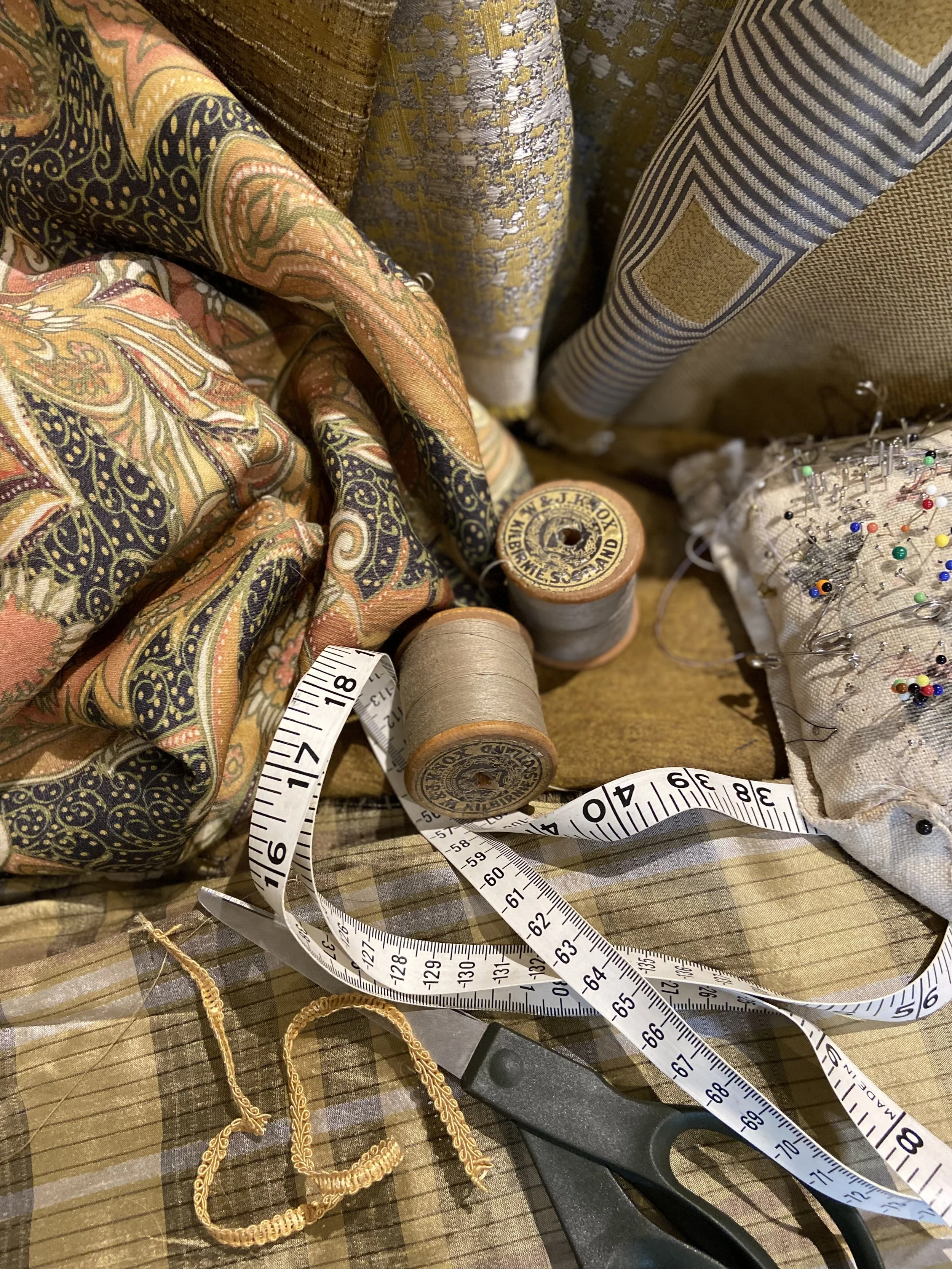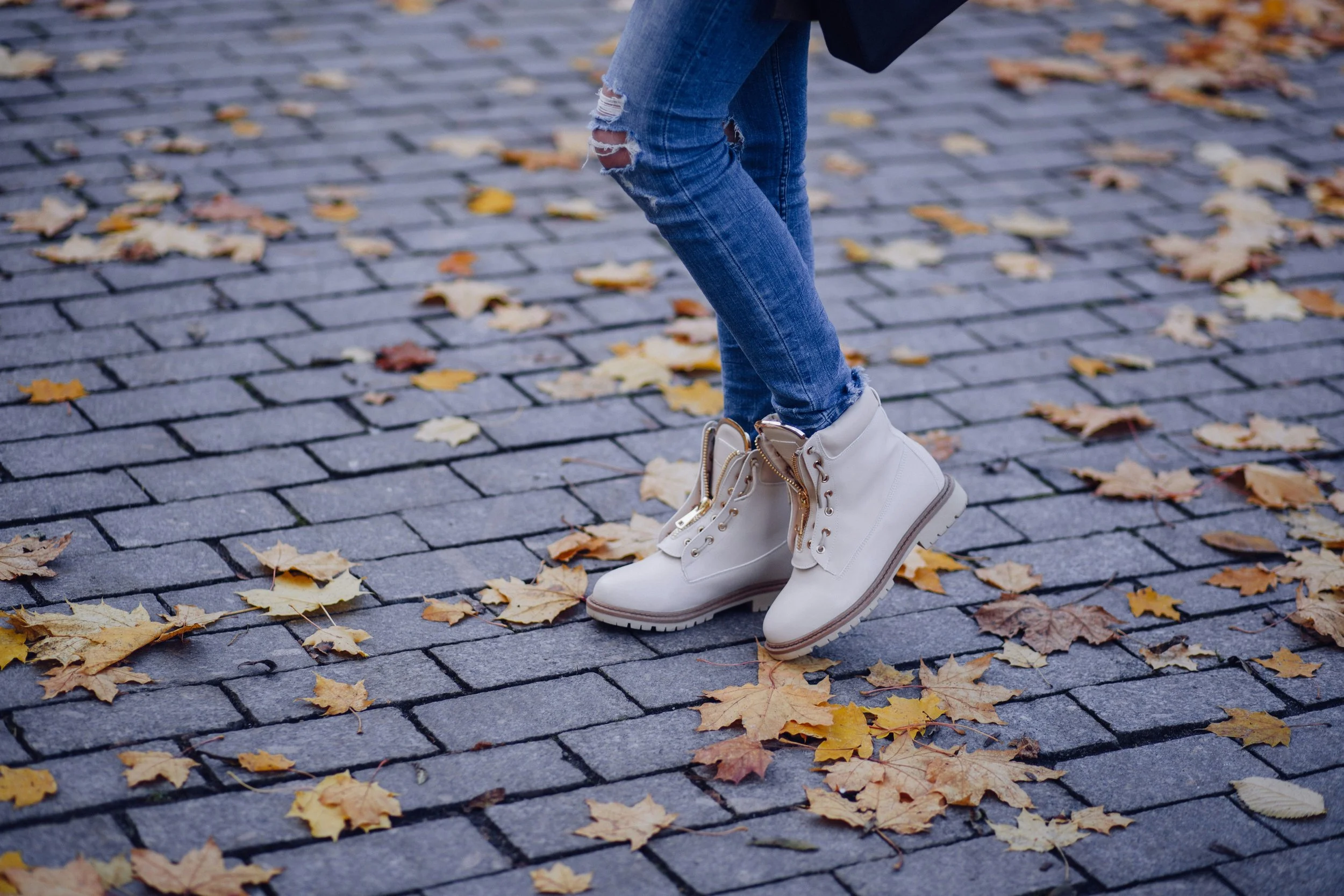having a sustainable wardrobe no.5
the how to guides
(A longer read)
Photo credit. Adrienne Leonard Unsplash
becoming savvier about fabrics and sourcing
We have all had things that looked lovely in the shop or online, only to find that on wearing they look like a rag, or like you’ve slept in them, or that the knitted fibres pill and bobble and then things can look very tired, very quickly. Making an informed decision about what your new item is made from, and how it has been made, is probably as important as anything else in your purchase. Remember it is not in the interest of many retailers for something to last for years. They want you back in their store in a few weeks for something new.
fabrics and fibres
Photo credit. Nafinia Putra Unsplash
Natural fibres like wool and cotton tend to be better behaved than some synthetics in terms of creasing and wear resistance. Silk and rayon/viscose are natural fibres, but they can sometimes crush badly, depending on the weave and the manufacturing process.
Synthetic fibres like polyester, are almost always formed from derivatives of oil, coal, or natural gas. While they have the advantage of being hardwearing and can be created to form a wide variety of different fabrics, the sustainability downside is twofold. Firstly, they are made from petrochemicals which might not be high on your agenda, and secondly, when you want to dispose of them, they won’t break down in landfill for many decades.
Perhaps you are thinking that a ubiquitous and long lasting ‘eco’ fabric such as cotton might be a good answer for sustainability, however, this isn’t the case. Although it grows well in many parts of the globe and has been used for millennia to clothe the world, it takes between 10,000-20,000 litres or water to grow 1 kilo of cotton, depending on where it is grown. One kilo of cotton is roughly equal to one pair of jeans and a T-shirt. The impact that growing this crop has is way beyond just the water consumption, there is also a problem with soil erosion, and the use of damaging pesticides and fertilizers.
Silk is made from the cocoon that silk moth lava surrounds themselves in while they pupate, or rather they don’t pupate because they are dissolved in boiling water to allow the silken filaments to be released and transferred onto a reel. Natural yes, beautiful yes but some people are put off by this production method, even though it is centuries old.
Rayon, viscose, and modal are all made from vegetable matter, namely wood pulp, to create fabrics that are cheaper alternatives to silk. As long as there are trees, rayon is available and sustainable. Many variations are woven in blends to attempt to diminish the creasing that can often be a problem. Linen is made from the flax plant but again has a terrible reputation for creasing. When you are looking at these fabrics, do a crease test to see what happens. Just scrunch a corner and look at the result. If it creases there, it will definitely crease when you’re wearing it.
Recently banana fabric has grown in popularity in garment production, although it has been used for centuries in the countries where is is produced. It is made from fibres in the trunk of an inedible species of the well known plant. The fabric has lots of great qualities but is very labour intensive to produce and it can take 37kg of stems to produce 1kg of usable fibre.
Wool is often described as the only truly natural eco fabric out there. The sheep’s fleece is a by-product, and no harm comes to the animal when it is shorn, and it is actually very grateful not to be wearing an immense woolly jumper all summer…so a natural win-win!
Leather is obviously a natural by-product that has been used for millennia and you may like it or not. Recently there has been an explosion of ‘vegan leather’ as an alternative. However, the choice you have isn’t necessarily as cut and dried as you might imagine. While the vegan alternative might appeal to some, in reality, whatever the claimed ‘green’ credentials, vegan leather is plastic, and plastic is made from oil. While being ‘ethical’ could be the deciding factor in your purchase, you may not have considered the origin of the alternative material you are wearing. Without the slick marketing, would you have chosen to buy plastic trainers or a jacket that are made from oil?
From this, you can see it is not just considering the design and fit of the item you are buying if you want to be more sustainable than you are at the moment. Take some time to look at the fibre content as well. You will find all sorts of fabrics and textures available at all price points, so it isn’t a question of affordability as much as a conscious decision on your part.
production
When it comes to the manufacturing process of the fabrics and the finished clothes and accessories, I am sure that everyone is now aware of many of the bad practices that have been highlighted in the garment industry. The dying process can pollute huge areas of land and waterways. Whether it is people working in unsafe conditions abroad or being under paid in ‘sweat shops’ in the UK, the origin of the clothes you wear is very often something that doesn’t bear close investigation.
To have sustainable fashion in my mind means that both the fabrics and the manufacturing process need to work in partnership with the earth’s resources and the welfare of the people who are part of the whole process. In the past when clothes were bought for their quality, things were different but with the advent of fast fashion, the reality can be pretty horrifying.
A recent survey suggests that globally up to 100 BILLION garments are produced each year, and as much as 92 MILLION TONS of clothing ends up in landfill, and from these enormous numbers only 20% of textiles are recycled. Buying without thinking will only add to these numbers, so the sooner we all take some responsibility, and value what we have, the better. Back to the basics of ‘buy better, wear more’.
You can do your own research into the companies that you are buying from to see about their sustainable credentials, or you can take a moment to think about the general practicalities behind your purchase. I will give you an insight that will hopefully get you thinking differently about the difference between cost and value.
cost breakdown
If we start at the end point and work backwards, the cost of whatever you are buying includes the seller’s mark-up. This will increase depending on their overheads and the strength of their perceived market. They will typically double or even treble the cost price (what they paid) …which is why they are often not losing money in a 60% off sale.
You then need to consider the costs of transporting, importing (as applicable), VAT, warehousing, and marketing before you even get to the design, manufacturing, and fabric costs. While most of the clothes you buy are mass produced, there is still a single unit cost to be borne.
Photo credit. Freestocks Unsplash
So, in a very unscientific analysis just to give you an idea, if you are buying jeans for £10, the mark-up is perhaps £6, which would leave their cost price at £4. Transporting, tax and duties etc might be £1, which then leaves £3. That is £3 to cover all the factory costs, and 1.2 metres of denim, zip, thread, and then maybe half an hour of manufacture, including cutting out, machining, finishing, pressing, and packing. The people making these jeans simply cannot be paid well, even if they got the whole of the £3, which they obviously don’t.
If you pay more for items, then we have to hope that more money gets to the people whose expertise creates these things. The costs behind an endless supply of cheap clothes just don’t add up. Wholesale costs are very different from retail and I know this next fact bears no relation to the mass manufacturing process. However, if you look for a zip in the shops because yours is broken, just buying that zip can cost more than the whole of the creation of the jeans you want to repair.
My figures are all hypothetical, but the theory is sound, but please keep the basic premise in mind when you are looking for a bargain. If you want to help to build a sustainable world, everyone needs to play their part. However, even this isn’t as straightforward as you might think.
the conundrum
What might be considered low pay for you, while it could obviously be better for those in the clothing industry, might also be giving them an income in a country where unemployment may be high, and living conditions poor. So, the fact that they have a job at all is a very good thing for them. If we are prepared to pay more for things, then you would hope that those increased figures will trickle down to the people whose skill and industriousness created your item in the first place. Perhaps legislation will be needed, but as it would need to be on a global basis, I wouldn’t hold your breath.
I don’t have any answers, I have no experience in mass production as I have only ever worked in a one-off private client environment. I am just sharing some basic facts and my thoughts with you. If we all become more aware of fabrics and production practices then surely this can only be a positive thing for creating a sustainable system? Valuing what you have and always aiming for quality over quantity strikes me as a great place to start.
Continues in No.6…
All rights reserved. Milly Churchill asserts the right to be identified as the author of this work.




